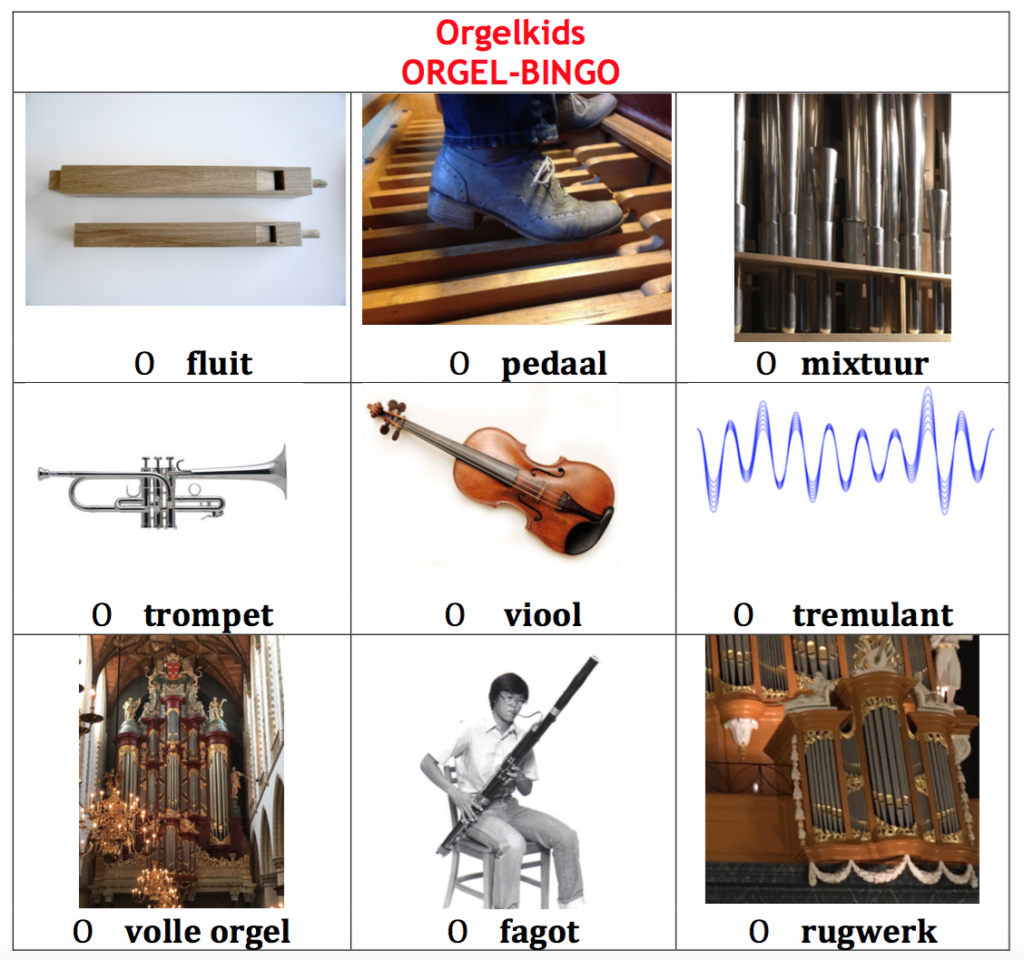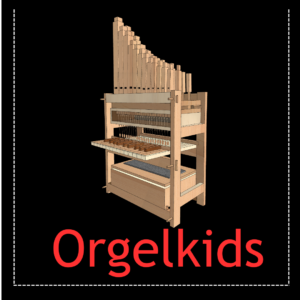The organ is an old instrument. A lot has changed over the centuries, especially the sounds and playing techniques. Certain stops were fashionable at a certain time. The wishes and orders for the organ builders followed the musical fashion closely. For example, an organ from the Romantic era has other possibilities than an organ from the Baroque. As a result, not all music for organ can be played properly on every organ. Take children on an adventure through these developments and present the organ as a ‘time machine’. The organ that you play does of course influence the possibilities that you have.
Suggestions for activities
There are countless possibilities for children to actively listen to the organ. Teaching methods can be made suitable for any age group.
Recognizing instruments
Invite children to the keyboards so they can see what is happening. Play a simple melody with a different stop each time. Choose some stops that imitate an instrument: trumpet, flute, violin, bassoon, vox humana, etc.
- Then play a few short pieces and ask which instruments the children have recognized.
- Vary in difficulty by age group.
Organ memory
This is a continuation after recognition. Now let the children listen without seeing what the organist is doing. Which stop did you hear in this piece? Also use more stops, one after the other or even combinations.
- Let children write it down, or have the order set with cards (image or text).
- Play as a game, with teams.
Organ Bingo
Op een Bingo-kaart staan vakjes met verschillende woorden (registernamen) of afbeeldingen (instrumenten). Kies het aantal vakjes, bijv. 5 of 9, afhankelijk van de gewenste moeilijkheidsgraad. Geef alle kinderen dezelfde kaart.
Speel een aantal stukjes muziek en laat leerlingen aankruisen als ze iets hebben herkend. Wie alle vakjes heeft roept Bingo. De organist bereidt zich uiteraard voor en bepaalt dus het moment waarop de Bingo ‘valt’.
Een variant: niet met registers of instrumentennamen, maar met componisten of tijdvakken.

To narrate a poem or story
Ask the children to write a story or a poem beforehand (for example, as an assignment for another school subject). The story should have three scenes, each with a different atmosphere. Pay attention to contrasts and contradictions in the sound.
Discuss with the children at the organ which stops suits which atmosphere. Then perform together. The author reads the story and the organist plays with the help of another child for the stops.
Silent movie
For older children, the ‘silent movie’ (without sound) is an interesting topic. Take them back to the time when the organ provided the sound effects for the images.
- Show a short clip from an old movie, let the children think for themselves which registers and playing style express what is happening in the film. Check it out afterwards and discuss the outcome.
- Children can make a short video themselves without sound. In addition, they must give the correct instructions to the organist in order to obtain the desired sound image.
Dances
Dances have also developed over time. Pay attention to different dances during a lesson moving to music.
- Play music fragments appropriate to different time periods and let the children depict in dance what time it belongs to.
- For advanced listeners / dancers: play parts from a suite in which different dances occur on the organ and have them performed.

 If you want to get started with the Do-organ, we have instruction cards, a lesson plan, sheet music and much more ready for you.
If you want to get started with the Do-organ, we have instruction cards, a lesson plan, sheet music and much more ready for you.
